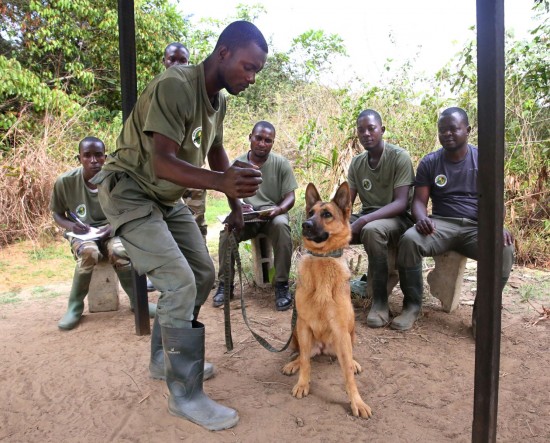Meet this one Spanish dogs and your beautiful work. In the Republic of Congo, in the southwest, is the Tchimpounga Nature Reserve, a protected area of 52,971 hectares that the Institute Jane Goodall (IJG) of Congo manages this in collaboration with the country’s Ministry of Water and Forests. This protected area is notable for the presence of populations of wild chimpanzees and for the great diversity of birds and mammals, among other species of fauna and flora.
Because of the abundance biodiversity Due to the lack of controls, there are many wild animals in the Republic of Congo that are illegally hunted and marketed internally (bushmeat trade), or even traded (alive or dead) to other countries in Africa, Asia or Europe.
This illegal trade in protected species or their parts is a crime that moves millions of euros around the world and is driven by poverty and inequality. poaching Because the sale and consumption of meat is a common source of income locally in rural areas.


But the country’s resources to combat this problem are scarce, and unless the consumption, trafficking and illegal trade of wild species is controlled, populations will be seriously affected.

(@Jane Goodall Institute / Fernando Turmo)
Spanish dogs at the Unité Canine Anti-Bracconage
For this reason, the IJG Congo, led by Dr. Rebeca Atencia, created a canine unit called “Unité Canine Anti-Bracconage” as a strategy to combat the illegal trade of animal species in the main ports, airports and roads in this part of the region. country.
Since then, it has played a key role in supporting national authorities in strengthening the enforcement of Congolese laws, seizing trafficked specimens and acting as a powerful deterrent to potential traffickers.
The dog unit consists of 5 dog guides, including several ecoguards with paramilitary training, and 4 Spanish dogs trained first in Spain and then in Congo to detect dangerous or illegal objects (weapons, ammunition…), as well as evidence of illegal crimes against wildlife, such as pangolin scales, chimpanzees, gorillas or baboon hair.

(@Jane Goodall Institute / Fernando Turmo)
The guides continue the training until the Spanish dogs each week they learn to smell objects in cars, bags, boxes, etc. to find traces. Every morning the dogs and their handlers conduct a thorough search for vehicles entering and leaving the Tchimpounga reserve.
While the Spanish dogs Using their powerful sense of smell to find clues, eco-guards use CyberTracker software to record all vehicle license plates. When they detect illegal activity, they immediately record it using GPS technology and alert the reserve director to take action.
Often the dogs Trackers detect live animals, some of which are illegally traded from other nearby reserves. These animals are seized and while some are held at the Tchimpounga Rehabilitation Center to receive the veterinary care they need, the healthy animals are released directly into the reserve.
Through daily care and play, dog handlers like Arsene form close bonds of trust with their four-legged colleagues, enabling effective teamwork.
Spanish dogs in dog units: a resounding success
In this way, the Canine Detection Unit has managed to increase its success in detecting illegal activities in the Tchimpounga Reserve and its surroundings. In addition, the unit’s regular presence at eco-guard posts has become a powerful deterrent to traffickers, who previously would have attempted to conceal illegal material in vehicles and luggage.
The IJG has also made available to Spanish dogs trackers in areas outside the reserve. In 2021, the Congolese Ministry of Forest Economy approved an expansion of the IJG Congo Canine Detection Unit’s activities in two more national protected areas.
These are the Conkouati-Douli National Park and the Dimonika Biosphere Reserve, as well as the Bas-Kuilou river port, as the latter is suspected to be a frequent passage for illegal traffickers with species originating from the northern end of the river and destined for the town of Pointe Noire.

